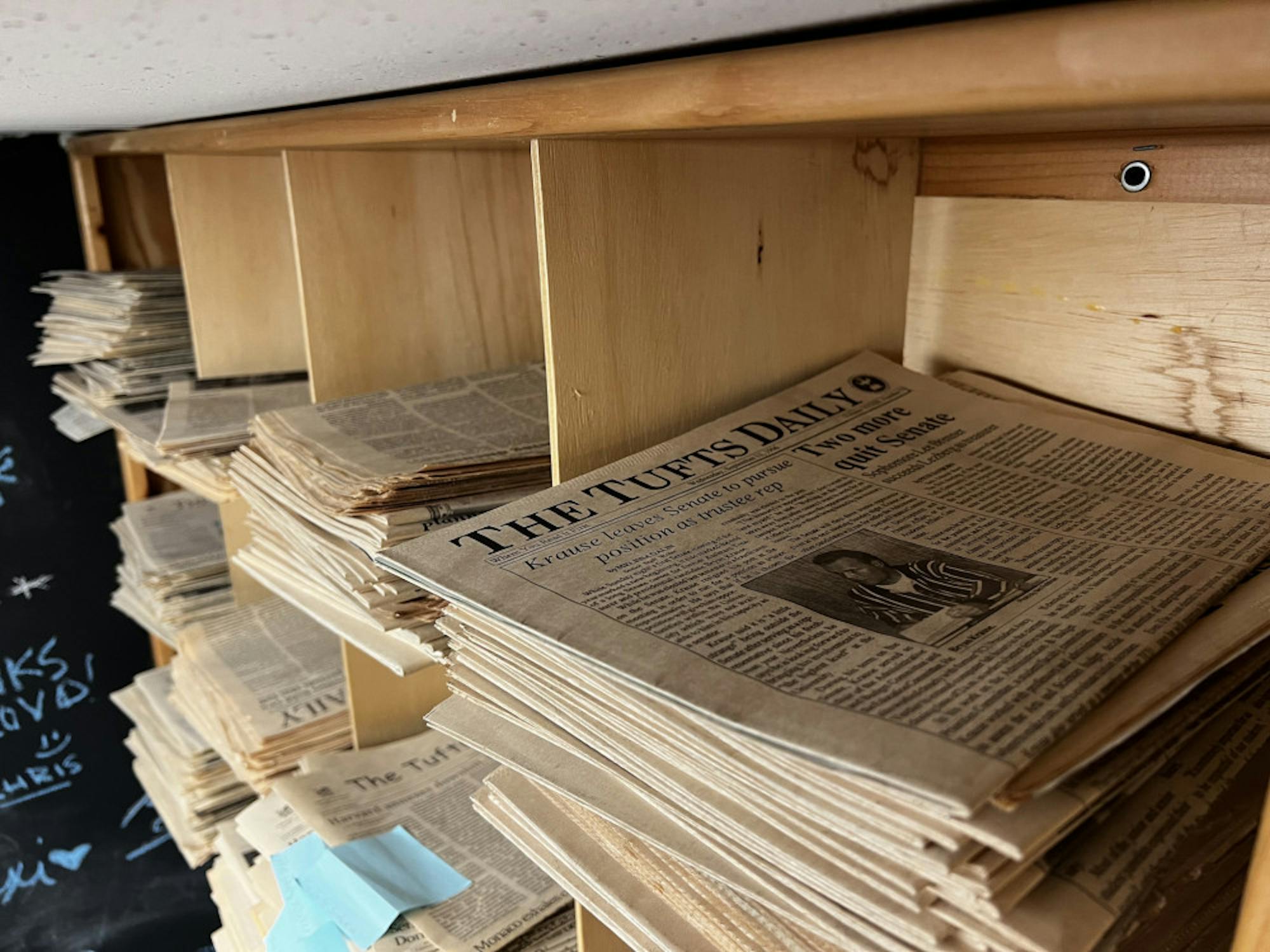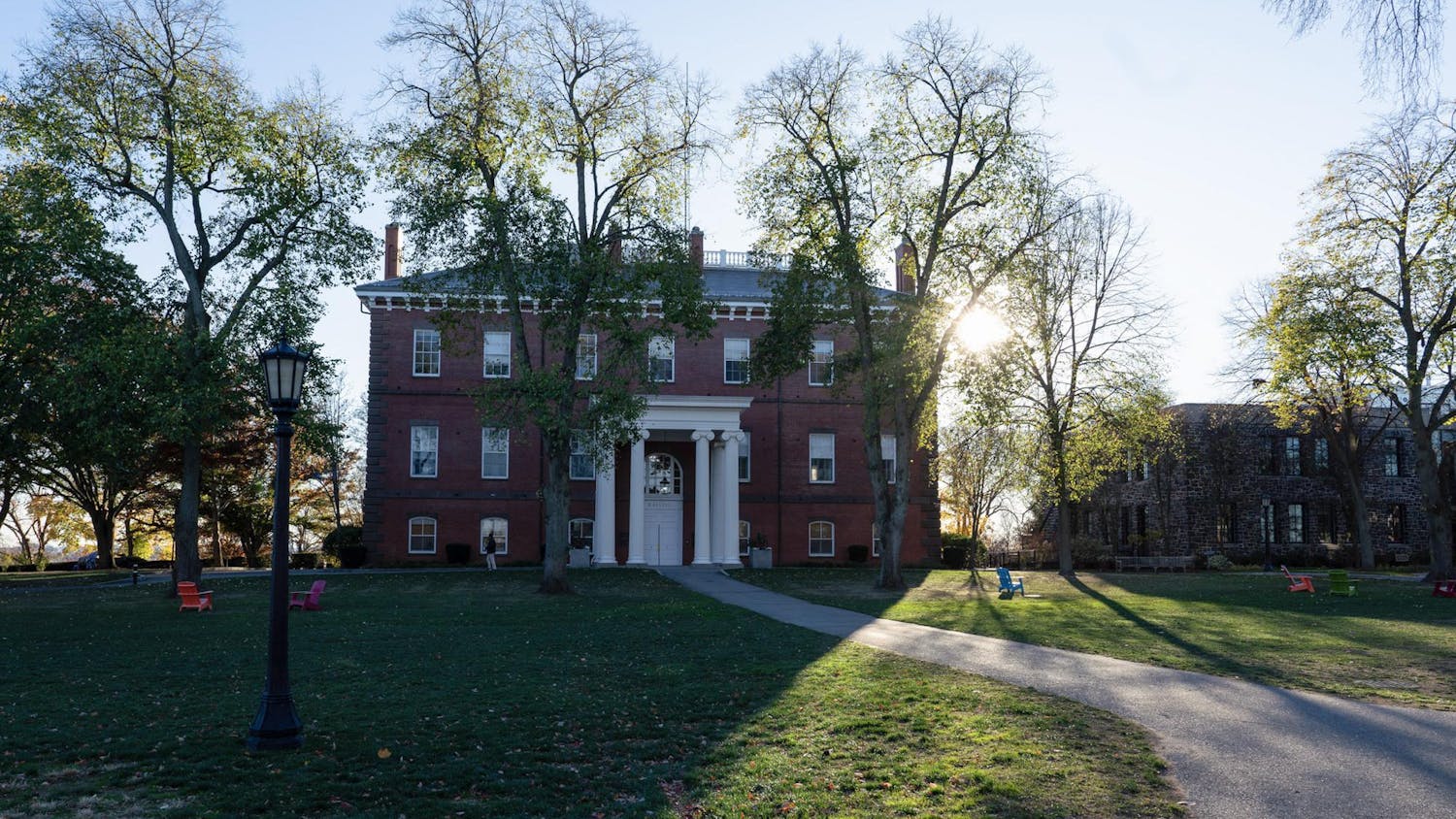Tufts Digital Collections and Archives launched Newspapers @ Tufts, a digital collection of thousands of issues of the Tufts Weekly, the Tufts Observer and the Tufts Daily, in January 2022. The collection documents 124 yearsof university history through the lens of student media.
The digital collection currently contains 6,000 issues of the three student publications totaling around 80,000 pages. DCA is working on digitizing a final batch of 1,900 issues comprising approximately 34,000 pages, at which point the project will be caught up to the present day.
Dan Santamaria, director of DCA, said the Newspapers @ Tufts project was born out of DCA’s belief in the potential impact of making past issues of student publications readily accessible to the wider Tufts community.
“We’re constantly looking for ways to improve access to the material that’s under our stewardship, and … using staff expertise and judgment about what’s the most valuable and what would have the most impact,” Santamaria said. “These student publications consistently rise to the top in whatever method that you look at. They’re used a lot for classes, they’re used a lot by archivists trying to answer questions about the university.”
Santamaria spoke about the role of student publications as records of university history.
“They're essential documentation of university history because they provide, more than any other source, the student voices about whatever was happening at Tufts at that particular time, on that particular day,” he said. “They balance out the official records that we get from university offices over time.”
DCA started planning the Newspapers @ Tufts project in 2018 and began digitizing publications in 2019. Sari Mauro, digital collections project manager for DCA, described the process of digitizing the preexisting physical collection of student publications and creating a platform where users could easily search the collection by publication title, date and keywords.
“It became clear that we could digitize these newspapers, but the key to making them really useful [was] how you could search them,” Mauro said. “Those two things sort of coincided — our digitization of newspapers with our need for a robust search platform — and became Newspapers @ Tufts.”
The collection begins in 1895 with the inaugural issue of the Weekly and goes on to document the final issue of that publication in December 1968, the emergence of the Observer in January 1969 and the publication of the first issue of the Daily on Feb. 25, 1980.
Santamaria said he noticed the student media landscape evolving over time as worked his way through the Newspapers @ Tufts collection.
“If you look at those early issues of the Weekly [you see] factual stories, a lot of it based on the social life on campus,” he said. “But then as you get into the latter part of the 20th century … there's a very clear evolution to students seeing themselves more as journalists and having a role in transparency and providing a view on the university and the administration specifically about what's happening at Tufts.”
Mauro noticed that, especially with physical issues of the Weekly, the content and form of the published issues reflected the historical events surrounding their publication.
“When paper becomes scarce because there's a war, it becomes fewer pages. And because to digitize, I have to count every page of every issue, I can see that trend happen,” Mauro said. “So there's this materiality that you can also track as world events impact what's happening on campus even down to like, how do you produce a newspaper heard during a World War? And [also] just tracking, what are they writing about? What's making the front page, what isn't? What's happening that isn't mentioned at all? And then how is the production of the paper affected?”
Efforts to collect and archive student publications at Tufts predate the Newspapers @ Tufts project. Luke Allocco (A’21), a former associate editor and outreach coordinator at the Daily, undertook a project of indexing headlines, mastheads and images from past Daily issues in preparation for the paper’s 40-year anniversary in 2020.
“I've always been really interested in history,” Allocco said. “Wherever I am, I'm sort of a sponge. I just have this need to know about the history of where I am and what I'm doing.”
Allocco echoed Santamaria’s sentiment that student publications function to preserve university history.
“When researchers are looking back at what the day to day life was like for a student at Tufts in the midst of the coronavirus pandemic, or reacting to President Monaco's retirement, they're going to come to the Daily, or they’re going to come to the Observer, and they’re going to look in these archives,” Allocco said.
Allocco added that archival issues of the Daily help build institutional memory for future writers and editors.
“When these big events happen, and when we make changes in the way we do things, sometimes that information gets lost as students graduate and new students come in,” he said. “It's been really important for us at the Daily as an organization to learn from our history and learn what we've done in the past. And I think that helps us make better decisions about where we're going in the future.”






